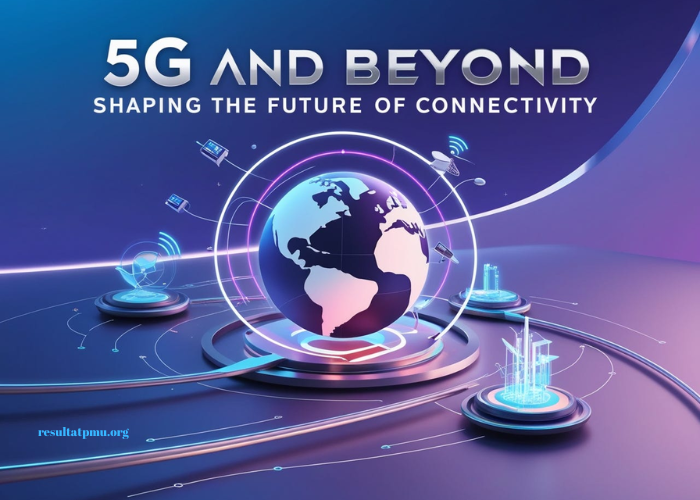In recent years, 5G technology has emerged as a transformative force, promising to revolutionize not just communication but entire industries. As we delve into the future of 5G, we will explore its potential to create a hyper-connected world, the advancements it offers, its applications across various sectors, and the challenges that lie ahead.
Understanding 5G Technology
5G, the fifth generation of mobile networks, is designed to be faster, more reliable, and capable of supporting a vast number of devices simultaneously. Unlike its predecessor, 4G, which primarily focused on enhancing mobile internet speeds, 5G aims to create a more interconnected ecosystem. It achieves this through advanced technologies such as millimeter-wave frequencies, massive MIMO (multiple-input and multiple-output), and network slicing. These innovations enable faster data transmission, lower latency, and increased capacity.
Key Features of 5G
- Faster Speeds: 5G can achieve speeds up to 10 Gbps, significantly outperforming 4G’s maximum speeds of around 1 Gbps. This increase will allow users to download large files in seconds and stream high-definition content without buffering.
- Low Latency: With latency as low as 1 millisecond, 5G provides near-instantaneous communication between devices. This feature is crucial for applications that require real-time data transmission, such as autonomous vehicles and remote surgeries.
- Increased Capacity: 5G can support up to one million devices per square kilometer, making it ideal for urban environments and the growing Internet of Things (IoT) ecosystem.
- Enhanced Reliability: 5G networks are designed to be more resilient, reducing downtime and ensuring a consistent connection for critical applications.
- Network Slicing: This feature allows network operators to create multiple virtual networks within a single physical 5G network, tailored for specific applications or user needs.
The Hyper-Connected World
The term “hyper-connected world” refers to a future where virtually all devices, systems, and people are interconnected through seamless communication. 5G is a key enabler of this vision, supporting the growth of IoT, smart cities, and digital ecosystems. As we move towards this hyper-connected reality, we will see profound changes across various sectors.
Smart Cities
5G will play a pivotal role in the development of smart cities, where data from numerous sources is collected and analyzed to enhance urban living.
- Traffic Management: Real-time data from vehicles, traffic signals, and sensors will enable smarter traffic management systems, reducing congestion and improving road safety.
- Public Safety: With faster communication, emergency services can respond more effectively to incidents. Connected surveillance cameras and smart lighting systems will enhance public safety by providing real-time data to law enforcement agencies.
- Energy Efficiency: 5G will enable smart grids that monitor and manage energy consumption more efficiently, optimizing resources and reducing costs for consumers.
Healthcare Innovations
The healthcare sector stands to benefit immensely from 5G technology.
- Telemedicine: With low latency and high-speed connections, healthcare professionals can conduct remote consultations and surgeries with greater efficiency, ensuring patients receive timely care, regardless of their location.
- Wearable Devices: 5G will facilitate the integration of wearable health monitoring devices that provide real-time data to healthcare providers, enabling proactive and personalized treatment plans.
- Data Management: The ability to transfer large volumes of data quickly allows for the seamless sharing of patient records, leading to better diagnoses and treatment plans.
Autonomous Vehicles
The development of autonomous vehicles relies heavily on real-time data exchange between vehicles, infrastructure, and the cloud.
- Vehicle-to-Everything (V2X) Communication: 5G enables V2X communication, allowing vehicles to communicate with each other and with traffic management systems, enhancing road safety and traffic flow.
- Remote Monitoring: Fleet management companies can use 5G to monitor their vehicles in real-time, optimizing routes and reducing fuel consumption.
Industry 4.0
The industrial sector is poised for a significant transformation with the advent of 5G, leading to what is often referred to as Industry 4.0.
- Smart Manufacturing: 5G will enable real-time monitoring of manufacturing processes through connected machines and sensors, improving efficiency and reducing downtime.
- Predictive Maintenance: By analyzing data from connected equipment, companies can anticipate failures before they occur, reducing maintenance costs and improving productivity.
- Augmented Reality (AR) and Virtual Reality (VR): In training and maintenance scenarios, AR and VR can be used to provide real-time assistance, enhancing worker skills and safety.
Enhanced Entertainment Experiences
The entertainment industry will also experience a significant shift due to 5G technology.
- Augmented and Virtual Reality: 5G will enable immersive AR and VR experiences, allowing users to engage with content in entirely new ways, whether in gaming, education, or live events.
- Streaming Services: With faster download speeds and higher bandwidth, streaming services can deliver ultra-high-definition content without interruptions, enhancing the user experience.
Challenges Ahead
While the potential of 5G is immense, several challenges must be addressed to realize its full benefits.
Infrastructure Development
The deployment of 5G networks requires significant investment in infrastructure. This includes building more cell towers and installing fiber optic cables to support the increased data traffic.
Spectrum Availability
5G technology operates across various frequency bands, some of which are already in use for other communications. Governments and regulatory bodies must allocate sufficient spectrum to ensure the smooth rollout of 5G services.
Security Concerns
With increased connectivity comes heightened security risks. The proliferation of connected devices creates potential vulnerabilities that could be exploited by cybercriminals. Ensuring robust security measures will be crucial in protecting sensitive data.
Device Compatibility
As 5G networks roll out, there will be a need for compatible devices. Manufacturers must produce a range of devices that can take full advantage of 5G capabilities, and consumers will need to upgrade their devices to stay connected.
Digital Divide
The implementation of 5G could exacerbate existing inequalities in access to technology. Efforts must be made to ensure that underserved communities have access to 5G services to avoid widening the digital divide.
Conclusion
The future of 5G promises a hyper-connected world that will transform how we live, work, and interact. From smart cities to autonomous vehicles and healthcare innovations, the potential applications of 5G technology are vast and varied. However, to harness its full potential, we must address the challenges associated with infrastructure development, security, and access.
As we continue to advance into this new era of connectivity, collaboration between governments, industries, and communities will be essential to create an inclusive and sustainable hyper-connected world. With the right strategies in place, 5G can serve as a catalyst for innovation, driving economic growth and improving the quality of life for people around the globe. The journey towards a hyper-connected future is just beginning, and the possibilities are limitless.




